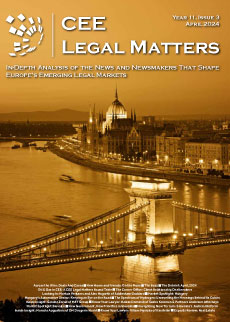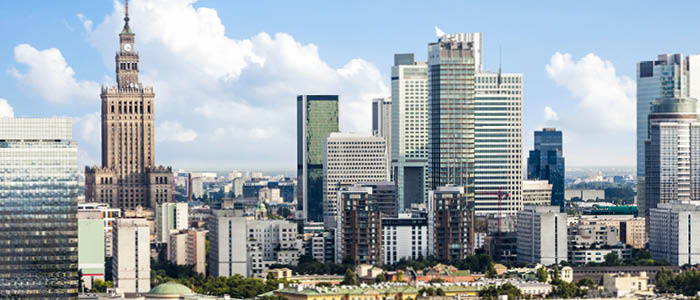The European Green Deal is a new growth strategy invented to reshape the EU economy. In the eyes of the European Commission, its scale exceed even post-war transformation in the West and post-Soviet transition in the East. The EU believes that is able to turn the urgent challenge of climate change into a unique opportunity to become a digital and green leader of the world.
All EU policies and actions will have to contribute to the Green Deal objectives. The reader shall bear in mind that the Green Deal project is just getting started and a vigilant analysis of its development is needed for at least 10 coming years.
The backbone of the widespread reform is an ambition to decouple growth from resource extraction and use, and to decarbonize the economy to achieve zero net emissions of greenhouse gases. Although the final perspective is 2050, there are many goals to be achieved earlier, in particular by 2030. Due to its massive scale and the political will of the EU authorities, the transformation will affect all economic sectors. However, certain leading business areas will be affected the most and therefore need comprehensive legal assistance for the ongoing transition.
With this brief outline, we open the series of Dentons publications, which will discuss the coming changes on the legislative horizon, the impacted sectors, and the practical steps to take to prepare for the new obligations and benefits.
Sectors
General Guidelines
The flagship idea to achieve full climate neutrality in 2050 is preceded by specific actions and policies aiming at reducing greenhouse gases (GHG) by at least 50% (as compared to 1990 levels) by 2030. The Climate Law, the first proposed legal document that has been presented, sets out the legal obligation of zero net emissions, the trajectory for achieving it, and plans of adaptation to prevent climate change. It is also worth mentioning that it extends the existing Emission Trading System to new sectors.
Energy
Energy production and use counts for 75% of EU emissions. Therefore, the transformation of this sector will be the most significant. The EU is clear on its plans for phasing-out coal and decarbonising gas.
This opens huge perspectives for renewable energy producers and forces current leaders to plan meticulously in order to achieve a smooth transformation. The Commission will prioritize offshore wind production, gas decarbonization, and interconnected digitalized Energy markets. It envisages investments in smart grids, hydrogen networks and carbon capture, storage and utilisation projects. What is more, the existing infrastructure and assets will need to be upgraded to fulfil climate resilience standards.
Industry
The EU assumes that the full transformation of industrial sector, including all value chains, will take 25 years. The general goal is to stimulate the development of leading markets for climate-neutral and circular products in the EU and beyond. Energy- and resource-intensive sectors will experience a major shift in terms of both decarbonization and modernization.
The Commission emphasizes the sustainability of products by reducing and reusing materials before recycling them. Environmentally harmful products shall not enter EU markets and extended producer responsibility is to be strengthened.
Another key transition concerns the plastics industry. The new legislation will tackle over-packaging and waste generation. It seeks to recover the economic value of waste and minimize its impact on the environment. Using legal instruments, the EU plans to create and boost existing markets for secondary raw materials. We can expect obligatory recycled content for packaging, vehicles, construction materials and batteries, to mention few. Furthermore, the EU is actively seeking frontrunners to develop the first commercial applications of technologies in key sectors like hydrogen, fuel cells, alternative fuels and CCS by 2030. The ETS Innovation Fund will finance large-scale innovative projects.
Construction
The transformation in the construction sector will take the form of a wave of renovations of private and public buildings. The EU plans to take legal and economic steps to boost the energy efficiency of buildings. Starting with assessment of long-term renovation strategies of Member States, the Commission intends to include emissions from buildings in the ETS. New and renovated buildings at all stages will need to comply with circular economy principles and head towards increased digitalization and climate proofing.
Mobility
The 90% reduction of GHGs in the mobility sector will be the most significant of all. To achieve this change, wide-ranging legal amendments are needed. The transition will be based on three pillars: the shift to multimodality, the substitution of inland road freight by rail and inland waterways. and the Single European Sky for aviation.
In the eyes of the Commission, the right pricing, taking into account the impact on health and the environment, requires ending fossil fuel subsidies and revising the Energy Taxation Directive as well as tax exemptions for aviation and maritime fuels. Moreover, it envisages reductions in free allowances for airlines and the extension of the EU ETS System.
Congestion and pollution in urban areas will be tackled by a massive investment in alternative transport fuels. One million public recharging and refuelling stations and 13 million zero- and low-emission vehicles are expected on European roads in 2025.
Agriculture
For the time being, the Common Agricultural Policy (CAP) represents a big part of the EU budget. The Green Deal assumes that 40 percent of the CAP and 30 percent of the maritime fisheries fund shall be devoted to climate actions. The turn to precision agriculture, organic farming and agro-ecology, agro-forestry and stricter animal welfare standards entails significant legal changes to come in the next few years. The Commission announced a major reduction in the use of fertilizers, pesticides and antibiotics. The legal acts should be presented in 2021.
Conclusion
The Green Deal requires making a massive public investment and directing private capital towards its solutions. Between 2020 and 2030, we expect to see a total investment of of €1 trillion. For the current climate and energy targets, €260 billion of additional annual investment is needed. To put this into context, this amount is equal to half of Poland’s GDP. Approximately 25 percent of all EU programs will be devoted to finance the transition.
What is also worth mentioning, in particular for CEE countries, is the establishment of the Just Transition Fund. Its goal is to leave no one behind, even in a situation of irreversible decline in employment and economic output. The EU has prepared legislative and economic solutions for sectors and regions that have to undergo the most significant transformation, resulting from historical dependence on fossil fuels.
According to the very recent conclusions from the special meeting of the European Council “An overall climate target of 30 percent will apply to the total amount of expenditure from the MFF [multiannual financial framework] and NGEU [recovery budget] and be reflected in appropriate targets in sectoral legislation”. The Just Transition Fund will provide €10 billion in funding to support green and digital priorities until 2026.
By Ewa Rutkowska-Subocz, Partner, Head of Environmental Protection Practice in Dentons’ Warsaw office and Co-head of the Environmental Protection Practice in Europe, Dentons





























